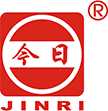How to Choose File Folder Thickness?
Selecting the right file folder thickness is essential for keeping documents protected, organized, and easy to access. The thickness you choose determines how well the folder withstands handling, how many papers it can hold, and how long it maintains its shape during daily office use. Understanding the materials and thickness options available helps you make a practical choice for both light-duty and heavy-duty filing needs.
Understanding File Folder Thickness
File folder thickness is usually measured in points or grams per square meter. In offices, the most common thicknesses range from lightweight paper stock to reinforced heavy kraft material. Thinner folders work well for temporary storage or minimal handling, while thicker folders are ideal for long-term use, larger document loads, or frequent transport. Each type provides different levels of rigidity, surface strength, and durability, making thickness an important factor in overall organization performance.
Common Thickness Options
A comparison of common file folder thickness standards:
| Thickness | Description | Best For |
|---|---|---|
| 180–220 gsm | Thin paper stock | Short-term filing |
| 250–300 gsm | Standard office thickness | Daily document storage |
| 350–450 gsm | Heavy-duty kraft | High-capacity or long-term use |
| Plastic PP 0.5–0.7 mm | Flexible plastic | Moisture resistance |
| Plastic PP 0.8–1.2 mm | Rigid plastic | Heavy or frequent handling |
These ranges vary by manufacturer, but they help illustrate the typical choices available for different levels of use.
Matching Thickness to Document Load
Choosing the appropriate thickness starts with understanding how many pages you need to store. Lightweight folders are suitable for a few sheets and occasional access. For high-volume storage or documents with inserts, a thicker design ensures the folder does not bend or tear. When transporting folders in bags or between departments, thicker paper or rigid plastic prevents deformation and protects the edges of your documents.
A thicker folder also offers better spine stability. It avoids curling under weight and keeps documents flat, which is especially helpful when storing official papers, project files, or archived materials. Additionally, certain materials perform better under pressure. For instance, thick kraft folders maintain shape during frequent opening, while heavy polypropylene handles moisture and accidental spills effectively.
Durability and Handling Requirements
Durability becomes a priority when folders are handled repeatedly. Offices that manage contracts, customer files, or multi-page records often require reinforced edges or thicker board to extend lifespan. Thin folders may fray or soften over time, especially in humid environments or high-traffic workstations. Thicker materials provide a more robust grip and resist surface damage when placed in drawers or desktop sorters.
If your workflow includes color coding or labeling, the folder surface must hold ink or stickers securely. Thicker folders generally offer better adhesion for labels and maintain rigidity even with additional markings. For mobile professionals who frequently carry folders between meetings, a more rigid structure ensures documents stay organized without bending.
Choosing Materials Along With Thickness
Paper-based folders and plastic folders react differently under weight and use. Paper stock offers a traditional look and is available in multiple thickness levels, making it suitable for everyday filing systems. Plastic folders, however, are measured in millimeters and provide waterproof properties that paper cannot match.
paper folders around 300 gsm provide good balance for general office work, whereas 400 gsm kraft is often used for legal or financial files requiring extended longevity. Plastic pp folders from 0.7 mm upward are ideal for students, field technicians, and offices that need to protect documents from moisture or rough handling. By pairing material type with the right thickness, you can achieve both protection and usability.
When to Choose Heavy-Duty Thickness
Heavy-duty thickness is necessary when:
Storing large volumes or thick paper types such as brochures or catalog inserts
Filing documents for long-term archiving
Handling files daily in a busy office
Moving folders frequently between different locations
Using dividers or multi-section inserts
Thicker folders also improve appearance in professional environments such as client meetings or presentation settings. The increased rigidity helps maintain a clean, flat profile.
Simple Recommendation for Reliable Quality
If you want consistent thickness, durable materials, and professional manufacturing, JINRI offers a wide range of file folders designed for business, school, and office use. Their products cover multiple thickness levels, providing options for lightweight filing, daily document organization, and heavy-duty archival storage.
Conclusion
Choosing the right file folder thickness ensures your documents stay well-protected and easy to manage. Consider the storage duration, handling frequency, document weight, and environment where the folders will be used. Balancing these factors with appropriate paper or plastic thickness helps build a more efficient filing system. With reliable options from suppliers like JINRI, selecting a suitable folder for any organizational need becomes simpler and more effective.
Previous:



